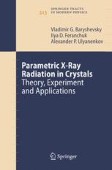Search
Search Results
-
Spinodal Crystallization of Polymers: Crystallization from the Unstable Melt
This paper reviews the authors' investigation into polymer crystallization, especially involving a spinodal decomposition (SD) type phase...
-
Molecular Dynamics Modeling of the Crystal-Melt Interfaces and the Growth of Chain Folded Lamellae
The molecular mechanism of polymer crystallization is one of the most difficult problems and has defied innumerable efforts to understand the...
-
Topological Mechanism of Polymer Nucleation and Growth – The Role of Chain Sliding Diffusion and Entanglement
Direct evidence of nucleation during the induction period of nucleation from the melt is obtained for the first time by means of small angle X-ray...
-
Modeling Polymer Crystallization
We summarize the salient conclusions derived from Langevin dynamics simulations of many flexible polymer molecules undergoing crystallization from...
-
Dynamical Theory of Parametric X-ray Radiation
Previous chapters demonstrate a close analogue between the theory of parametric X-ray radiation (PXR) in thin crystals and the kinematic theory of...
-
Cu-Mg-Si (Copper - Magnesium - Silicon)
This document is part of Subvolume A4 'Light Metal Systems. Part 4: Selected Systems from Al-Si-Ti to Ni-Si-Ti' of Volume 11 'Ternary Alloy Systems -...
-
Basic Theoretical Concepts
Superconductivity is the phenomenon of dissipationless transport which occurs in many metals at su.ciently low temperatures. Metals in the...
-
Optical Analysis of Monolayers at Surfaces and Interfaces
Surface as well as interface properties are crucial for tailoring advanced materials, especially if the structure size in one or more dimensions...
-
AlGaN/GaN Electrolyte-Gate Field-Effect Transistors as Transducers for Bioelectronic Devices
AlGaN/GaN electrolyte gate field-effect transistors are assessed as a transducer device for biosensor applications. Their low-frequency noise power...
-
Radiation from a Charged Particle in Periodic Media: Classical Theory
The method of pseudophotons, considered in the previous chapter, is convenient for qualitative analysis of parametric X-ray radiation (PXR). PXR in...
-
Prospective Applications of PXR
The previous chapters concern the fundamental properties of PXR, which have been experimentally observed and theoretically explained. The most recent...
-
Electromagnetic Radiation from a Charged Particle in Crystals: Qualitative Consideration
Electromagnetic radiation caused by motion of a charged particle has been studied for more than 100 years. It was firmly believed for an appreciable...
-
Thermodynamics – Past, Present and Future
We begin with historical remarks on the basic contributions to thermodynamics and statistics with some bias to scientists working in Berlin as...
-
Dynamical Variational Principles for Strongly Correlated Electron Systems
The self-energy-functional approach (SFA) is discussed in the context of different variational principles for strongly correlated electron systems....
-
Chemistry and Morphological Properties of Metal Interfaces to Organic Semiconductors
Metal contacts to organic semiconductors play a decisive role for the performance of organic based devices such as organic light emitting diodes,...
-
Two-Gap Superconductivity in Magnesium Diboride
It is by now generally accepted that the recently discovered superconductor MgB2 is a superconductor with two energy gaps. Here we discuss how this...
-
Atomic-Scale Properties of High-k Dielectrics: Ab Initio Study for Pr-Based Materials
We discuss the atomic and electronic structures and energetics of native point defects and of impurities (Si, Ti, B, moisture) in PrO1.5 and, to some...
-
Dynamics of Membranes: From Passive to Active Systems
Fluid lipid membranes, which, together with filamentous proteins like actin, form the basic structural component of cells, have been a central topic...
-
Probing the Parity and Spin State
Classification into classes of superconductors with singlet and triplet pairing, respectively, needs information on the parity and spin state of the...
-
Probing the Vortices: Lattice Symmetry and Internal Structure
A spatial variation of the superconducting properties occurs when a magnetic field is present perpendicular to the surface of a type-II...
